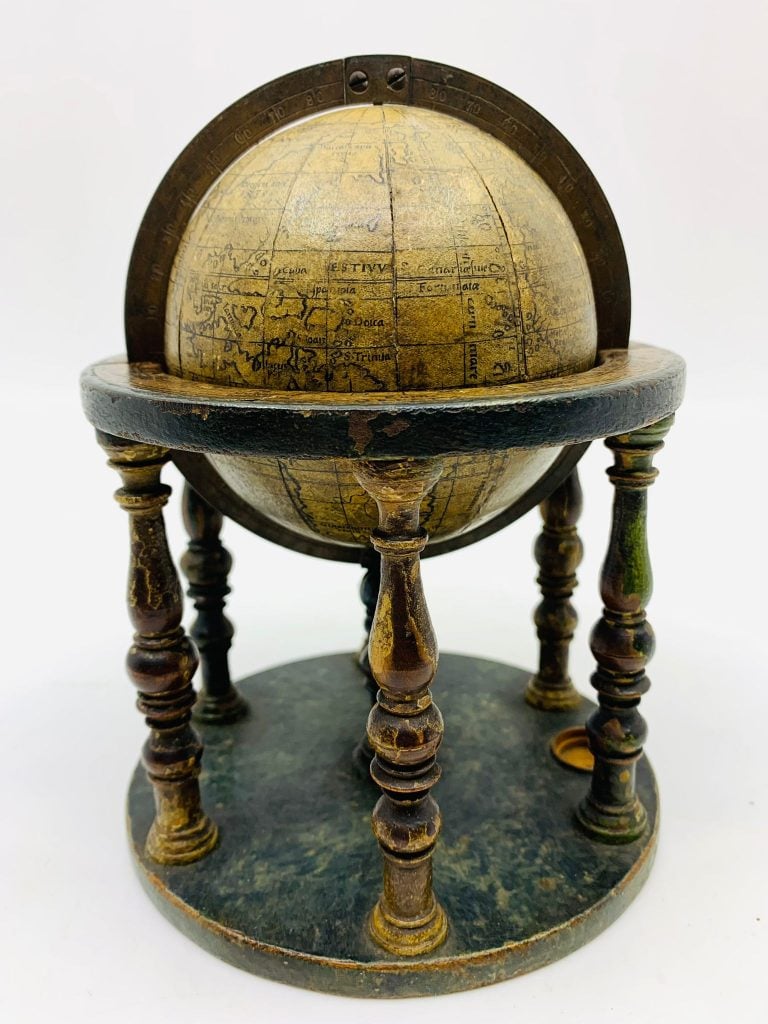Auctions
A Welsh Woman Picked Up a Globe for $199 at an Antique Fair Last Year. She Just Sold It for Almost 800 Times That at Auction
The globe, it turns out, was likely made around 1550-60, predating the discovery of Australia.

The globe, it turns out, was likely made around 1550-60, predating the discovery of Australia.

Taylor Dafoe

Last year, a Welsh woman bought a globe for £150 ($199) at an antique fair. This week, it sold for 770 times that at auction.
The globe, believed to be one of the oldest objects of its kind to hit the block ever, went for a staggering £116,000 ($154,000) Hansons Auctioneers, cruising past its £20,000-to-£30,000 ($26,000 to $39,700) pre-sale estimate. Five phone bidders vied for the piece, with an anonymous New York-based collector ultimately taking it home.
“I thought I was pushing the boat at £150 when I bought it during the pandemic,” the consignor said, per an announcement from Hansons. “I had no idea it was so important and valuable.”
She watched the event live this week, with good company: her husband, a friend, and a glass of wine. “My friend was crying, I was in shock, and my husband was totally and utterly dumbstruck,” she went on. “It goes without saying that I’m delighted.”
? Ancient globe – bought for £150 at #Welsh antiques fair – sells for colossal sum at auctionhttps://t.co/K3pEEHezxu@HansonsAuctions @LibraryAuction pic.twitter.com/pGhVRF0ghM
— Hansons (@HansonsUK) December 16, 2021
On a lark, the woman, whose identity was not shared, brought her recent purchase to a free valuation event at Hansons Auctioneers earlier this year. The carved wooden orb seemed old, after all: its map didn’t include Australia, for instance, while North America, it says in Latin, was “conquered in 1530.” Illustrated atop the oceans are various sea monsters.
Her hunch was right. An expert at the auction house learned that the globe was made around 1550–60, possibly by Francois Demongenet, a famous French geographer whose engraved gores, or curved sectors of paper, helped define globe-making in the era.
“The sheer age of the globe is mind-blowing,” said Jim Spencer, head of Hansons’ Library Auction. “People would’ve been wearing ruffs and codpieces when they first handled this globe in Elizabethan England.”
Quoting a specialist, Spencer explained that 16th-century globes almost never hit the market, and thus the consigned object’s value is difficult to quantify. “We think our globe could be the earliest ever offered at auction.”
“To me,” he added, “the globe feels priceless. It’s just so early and fragile to have survived the centuries.”
The globe’s full provenance is a mystery, but researchers did discover that it was owned at one point by Major Edward Croft-Murray, a former keeper of prints and drawings at the British Museum who died in 1980. During World War II, Croft-Murray served among the Monuments Men, a special group of American and British art historians and others who fought to preserve historic cultural artifacts from the Nazis.
Exactly how the globe ended up for sale at such a discount remains unknown.